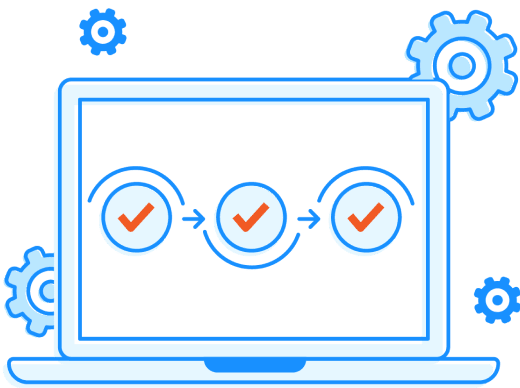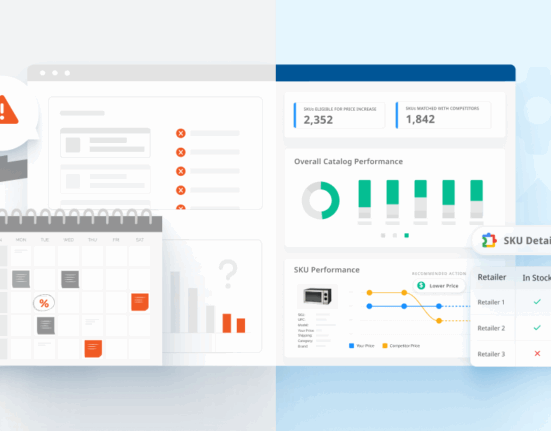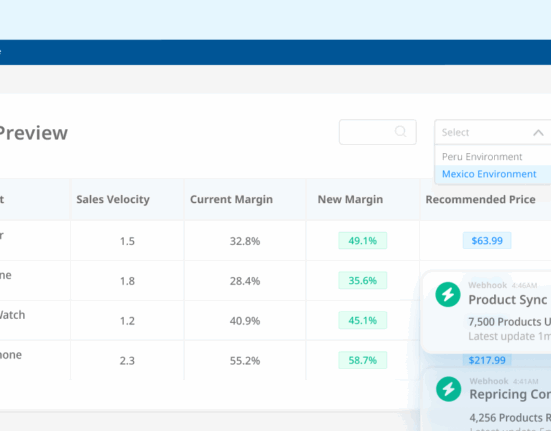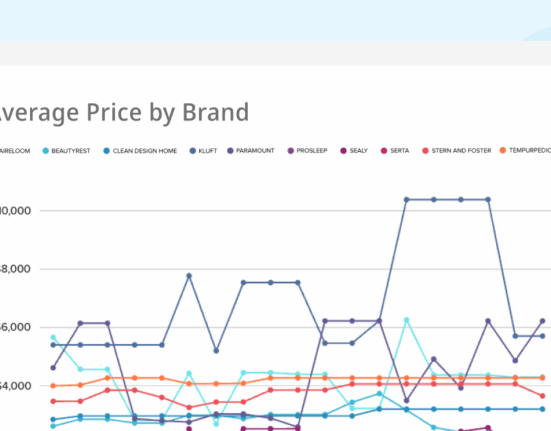The Complex Role of a Category Manager
Category Managers sit at the center of a high stakes balancing act. They are responsible for building a profitable, well-curated product assortment while ensuring pricing, promotions, and merchandising strategies align with business objectives. Every product decision carries weight. Misreading consumer demand could mean investing in the wrong products, missing a key trend, or failing to pull underperforming SKUs before they drain profitability. Their days are a flood of supplier negotiations, promotional planning, and cross-functional meetings—all demanding swift, strategic decision-making. They must assess whether assortment gaps exist, determine which new products warrant investment, and ensure product selections align with category goals.
But the sheer scale of modern retail makes these tasks overwhelming. Managing category growth, supplier partnerships, and promotional execution across multiple retailers and sales channels requires constant coordination. Without real-time visibility into performance metrics and competitive trends, Category Managers risk overstocking, underperforming product launches, and misaligned assortments, impacting profitability and long-term category success.
Category Management is More Challenging Than Ever
A Category Manager’s decisions shape the success of their category, influencing everything from sales performance to brand perception. They juggle multiple competing priorities—aligning pricing, assortment, and promotions while ensuring profitability and growth. Every move they make impacts not only their category but also the broader business strategy.
Internally, they must manage expectations from leadership, which demands category growth without margin erosion. Merchandising teams rely on them to curate a strong product mix that keeps pace with evolving consumer demand. Suppliers negotiate for better placement, promotions, and pricing agreements, while finance teams push for stronger profitability across SKUs.
At the same time, Category Managers are responsible for identifying new product opportunities, phasing out underperforming items, and ensuring the right assortment mix to maximize sales. They must balance the introduction of new products with maintaining a core lineup that meets customer expectations, all while making sure that shelf space—both physical and digital—is optimized. Additionally, they oversee promotional strategies, ensuring that discounts and marketing initiatives align with both retailer objectives and supplier funding.
Without structured, real-time insights, ensuring a well-balanced category strategy becomes far more challenging, leading to misalignment and missed opportunities. Misaligned pricing strategies, ineffective promotions, and lack of visibility into competitor moves can lead to lost market share, weakened supplier negotiations, and missed revenue opportunities. When decisions are based on incomplete or outdated data, profitability suffers, and sustaining strong category performance becomes increasingly difficult.
How Pricing Intelligence Tools Help Category Managers Make Smarter Decisions
Category Managers need more than intuition and past sales history to make informed decisions. They need a structured, data-driven approach that accounts for competitive pricing, product performance, and promotional effectiveness across retailers. Without clear visibility into market dynamics, they risk misaligning pricing strategies, missing gaps in assortment, and failing to optimize category-wide profitability.
Pricing intelligence solutions aggregate competitive pricing, promotional data, and market trends, helping Category Managers make data-backed decisions that improve category performance. Instead of relying on manual tracking and assumptions, they provide a structured, real-time view of competitive positioning and assortment strategies.
Key Benefits of Price Intelligence Tools for Category Managers
- Gain a Clear Competitive Advantage – Staying competitive isn’t just about tracking prices—it’s about seeing the bigger picture. Intelligence tools provide real-time visibility into pricing shifts, promotional trends, and competitor assortment changes, helping Category Managers adjust strategies proactively.
- Strengthen Supplier and Merchandising Strategies with Data-Backed Insights – Category Managers don’t just oversee pricing—they drive category growth. With detailed market data at their fingertips, they can negotiate better supplier terms, align pricing with business objectives, and optimize promotions to maximize revenue and profitability.
- Eliminate Manual Guesswork and Speed Up Decision-Making – Tracking thousands of SKUs across multiple competitors manually is overwhelming. Intelligence tools streamline data collection and generate structured reports that highlight category-wide pricing trends, promotional effectiveness, and competitor moves—allowing Category Managers to focus on high-impact strategy instead of chasing data.
For a retailer like Guitar Center, staying competitive depends on a strategic balance of pricing precision and thoughtful assortment planning. This is where Wiser’s Price Intelligence played a key role, helping Guitar Center gain real-time insights to refine their pricing and category strategies.
Before Wiser: The Challenges of Limited Competitive Visibility
Before implementing a price intelligence solution, Guitar Center faced challenges in maintaining competitive pricing consistency and assortment visibility. Gaps in data accuracy made it difficult to assess competitive positioning and optimize inventory turnover. Limited visibility into marketplace sellers and pricing trends restricted their ability to adapt category strategies efficiently, forcing reliance on manual adjustments and assumptions. These challenges slowed their ability to respond to market shifts, ultimately impacting category profitability and long-term growth.
After Wiser: Smarter Category Strategies with Price Intelligence
With Wiser’s Price Intelligence, now armed with real-time pricing and assortment insights, Guitar Center gained the clarity needed to make more strategic category decisions. Competitive visibility allowed for confident pricing adjustments, while deeper marketplace insights provided a clearer view of competitor positioning. With improved data accuracy, they streamlined category planning, enhanced inventory turnover, and strengthened profitability—ensuring their pricing and assortment strategies remained both competitive and aligned with business goals.
Read the full Guitar Center Case Study here
With real-time insights driving smarter decisions, the next step is ensuring that pricing strategies are executed effectively to support category growth and profitability.
Beyond Insights: Supporting Category Success with Pricing Optimization
For Category Managers, a strong pricing strategy is just one piece of the puzzle—ensuring those strategies translate into profitable actions is what drives sustained category growth. While Pricing Analysts focus on SKU-level adjustments, Category Managers must evaluate how pricing actions shape category-wide performance, from margin impact to promotional effectiveness. This includes assessing how markdowns affect sales velocity, ensuring promotional pricing aligns with financial objectives, and maintaining consistency across assortments. Without a structured approach to analyzing historical pricing performance, tracking pricing trends, and measuring outcomes, pricing execution can become reactive, leading to margin erosion and missed revenue opportunities.
Pricing optimization tools bridge the gap between strategy and execution, giving organizations a scalable, data-driven framework to refine and automate pricing decisions in alignment with category objectives. By structuring pricing execution around business goals, companies can improve financial outcomes, enhance category performance, and avoid pricing inconsistencies that erode profitability.
Key Benefits of Pricing Optimization Tools for Organizations
- Turn Strategy into Actionable, Profitable Pricing – A strong pricing strategy means little if execution is inconsistent. Optimization tools help organizations track past pricing performance, measure impact, and refine execution to ensure that every adjustment supports category goals, protects margins, and drives long-term profitability.
- Achieve Pricing Consistency Across Brands & Channels – Managing pricing across various brands, assortments, and sales channels requires alignment to prevent inconsistencies. Optimization tools enforce structured rules that create consistency, prevent pricing discrepancies, and keep category strategies on track.
- Equip Teams with Data to Strengthen Supplier & Retailer Negotiations – Pricing isn’t just about internal execution—it influences supplier relationships, promotional funding, and long-term category partnerships. With clear insights into pricing performance and historical trends, teams can approach negotiations more effectively, ensuring that pricing agreements and promotions align with category objectives.
For Build.com, implementing Wiser’s Price Optimization transformed their approach from broad, inefficient pricing adjustments to a structured, data-driven execution strategy.
Before Wiser: Challenges in Category Profitability
Operating in a competitive $400B home improvement market, Build.com managed an extensive catalog of 400,000+ SKUs. Before leveraging a pricing optimization tool, they struggled to align pricing execution with category goals, leading to inefficiencies and margin erosion. Some products were priced too high, resulting in lost sales, while others were unnecessarily discounted, cutting into profitability. Without SKU- and category-level insights, their teams struggled to align pricing decisions with strategic goals, highlighting the need for a more refined, data-driven approach to category-wide pricing.
After Wiser: More Profitable, Data-Driven Category Management
With Wiser’s Price Optimization, Build.com transitioned from broad pricing adjustments to a more structured execution strategy. By leveraging automated pricing workflows, they improved category-wide margin control while responding faster to market shifts. Real-time insights allowed them to refine pricing at scale, ensuring competitive positioning without unnecessary discounting. These improvements strengthened their overall category strategy, helping them drive revenue while maintaining healthy profitability.
Read the full Build.com Case Study here
For Category Managers, insights-driven execution is just as critical as market intelligence. By integrating automated pricing execution, businesses can establish a structured approach to category-wide pricing that aligns with strategic goals—ensuring a balance between profitability, competitiveness, and brand positioning. As the retail landscape evolves, those who combine intelligent insights with effective execution will lead their categories, strengthen supplier relationships, and drive sustained revenue growth.
Final Thoughts: Mastering Category Success Through Insights and Execution
For Category Managers, success isn’t just about setting the right strategy—it’s about ensuring that every pricing decision, promotion, and assortment choice contributes to long-term category growth, profitability, and competitive positioning. But without the right tools, even the best-laid plans can fall short.
Price Intelligence gives Category Managers the real-time insights they need to track competitor trends, evaluate promotions, and maintain pricing consistency. It provides the visibility necessary to stay ahead of market shifts and align pricing strategies with business goals.
Price Optimization ensures that those strategies are executed effectively, measured for impact, and refined over time. Rather than relying on instinct or manual adjustments, Category Managers can leverage data-driven execution to improve category performance, maintain margin integrity, and drive stronger financial outcomes.
With the right combination of insights and execution, businesses can move beyond reactive pricing and create a scalable, profitable approach to category management. Those who embrace a structured, evidence-based strategy will not only optimize their pricing decisions but also strengthen supplier relationships, enhance market positioning, and lead their categories into the future.
Take the Next Step
Category Managers are shaping the future of retail profitability. Ready to take control of your category strategy? Connect with a Wiser expert today and start making smarter, data-driven decisions.









